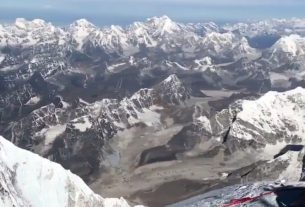As informed by Central Pollution Control Board (CPCB), water quality monitoring of rivers was conducted by the State Pollution Control Boards (SPCBs)/Pollution Control Committees (PCCs) during March & April, 2020 to assess the impact of lockdown due to Covid-19 pandemic in the country. The exercise was undertaken on 19 major rivers namely Beas, Brahmputra, Baitarni, Brahmani, Cauvery, Chambal, Ganga, Ghaggar, Godavari, Krishna, Mahanadi, Mahi, Narmada, Pennar, Sabarmati, Satluj, Swarnrekha, Tapi and Yamuna. The assessment was based on monitoring of parameters namely pH, Dissolved Oxygen (DO), Bio-chemical Oxygen Demand (BOD) and Fecal Coliform, as stipulated in Primary Water Quality Criteria for outdoor bathing notified by the Central Government under the Environment (Protection) Rules, 1986.
Based on monitoring results, some of the rivers (Brahmani, Brahmputra, Cauvery, Godavari, Krishna, Tapi and Yamuna) showed improvement in water quality which could be attributed to minimal industrial effluent discharge, no human and/or anthropogenic activities, cattle movement, etc. No improvement was observed in case of Beas, Chambal, Ganga, Satluj and Swarnrekha rivers. In case of Sabarmati and Mahi rivers, water quality remained unchanged. As such, no definite trend was observed to substantiate the impact of lockdown.
CPCB in association with the SPCBs/PCCs is regularly monitoring water quality of rivers and other water bodies in the country through a network of monitoring stations under the National Water Quality Monitoring Programme. As the CPCB report of September, 2018, 351 polluted river stretches were identified on 323 rivers based on monitoring results in terms of BOD, an indicator of organic pollution.
Rivers in the country are polluted mainly due to discharge of untreated or partially treated sewage from cities/towns and industrial effluents in their respective catchments. It is the responsibility of the States/Union Territories (UTs) and local bodies to ensure treatment of sewage and industrial effluents to the prescribed norms before discharging into rivers, water bodies or land to prevent and control of pollution therein.
Based on the assessment of water quality, various measures are being taken both by the Central and the State Government to prevent pollution of rivers. River cleaning is a continuous process and the Central Government assists the State Governments and urban local bodies through schemes like ‘Namami Gange’ and National River Conservation Plan (NRCP) of Ministry of Jal Shakti as well as Atal Mission for Rejuvenation and Urban Transformation (AMRUT) and Smart Cities Mission of Ministry of Housing & Urban Affairs, etc. Discharge of industrial effluents is monitored by CPCB and the respective SPCBs/PCCs through the provisions of the Environment (Protection) Act, 1986 and the. Water (Prevention and Control of Pollution) Act, 1974. Besides, in compliance of the orders of National Green Tribunal (NGT) in Original Application (OA) No.673/2018 regarding polluted river stretches in the country, States/UTs are required to implement action plans for restoration of the said stretches in their jurisdiction within the stipulated timelines. As per the orders of NGT, regular review is undertaken in the States/UTs and also at Central level.
This information was given by the Minister of State for Jal Shakti & Social Justice and Empowerment Shri Rattan Lal Kataria in Lok Sabha today.
Source: [Pib]


